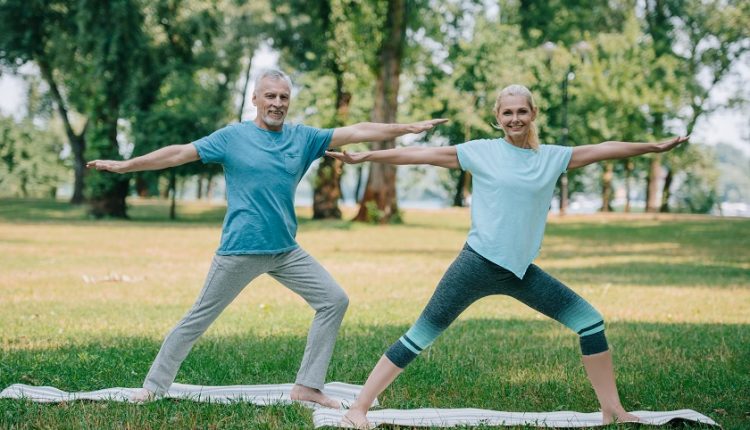
Falls Prevention, Improve Your Balance with These Simple Yoga Exercises
Yoga is one of the most practical activities for individuals of all ages and abilities. It is a practice that combines stretching and strengthening postures with deep breathing and relaxation to create a mind-body connection. Despite its origins in Eastern philosophy, yoga focuses on physical health, Falls prevention of Alzheimer and well-being as practiced in the West. Although it carries a spiritual element, it is not overtly religious. It is beneficial to people of all religions and belief systems, and everyone can profit from doing it.
Indeed, as you will see, regular practice of yoga for seniors lead to many benefits, ranging from increased flexibility and balance to less stress and better sleep.
As we age, we move less and lose our balance more often because of different reasons. Falling is the primary cause of bone fractures and hospitalization in the elderly. For adults, yoga has always been famous for unwinding, but it also has physical advantages. Slow, measured movements and strengthening postures can help you improve your balance and avoid falls as you age. One in every three persons over 65 falls each year, resulting in serious injuries.
Here are five yoga positions that you can do for five minutes a day, five days a week, to improve your balance.
Contents
Exercise 1: Downward Dog
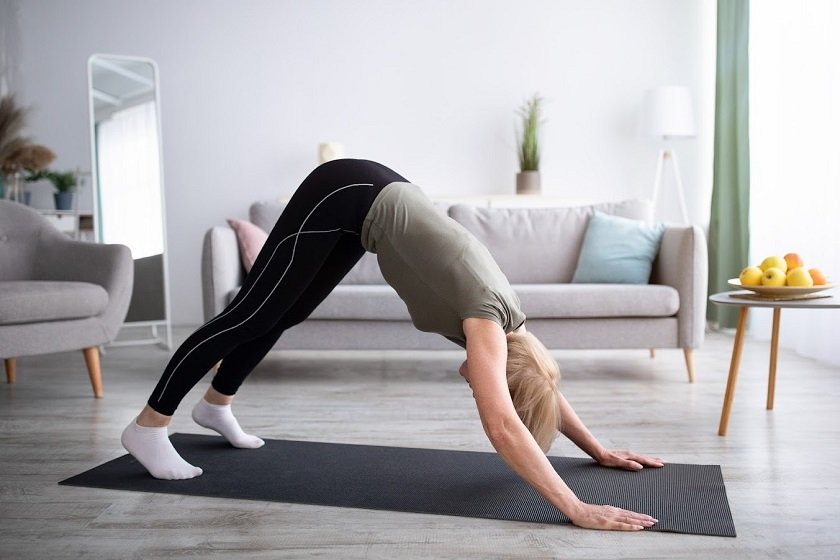
Downward dog included a hip fold with hands and feet on the floor, making a V-shape in the body. If you don’t have the strength to set your hands on the floor, you may rest them on a chair instead.
Fold your hips forward to lengthen your spine. The back should be flat, and the head should follow the spine. If necessary, bend at the knees or elevate your heels. Slide your shoulder blades down your back and twist your arms outward so that your elbow creases face forward.
Hold the posture for about 45 seconds before returning to the standing position.
Exercise 2: Crescent Lunge
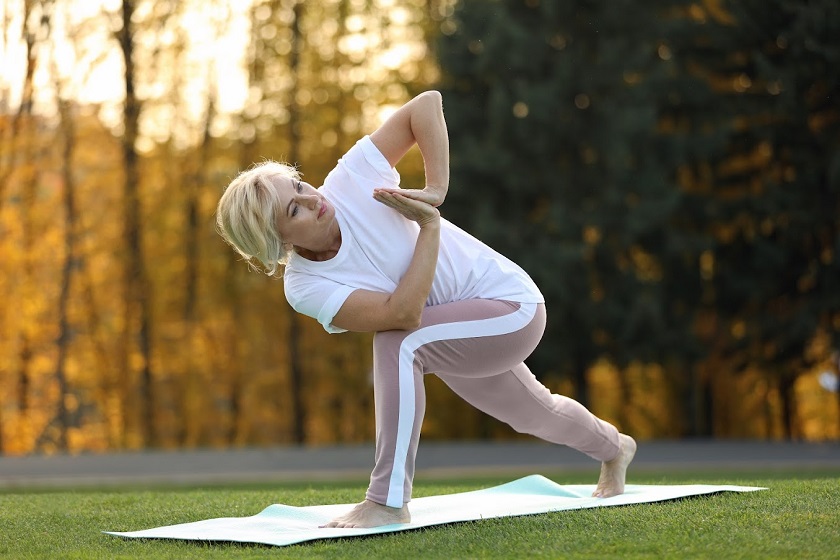
The crescent lunge needs you lunging forward with one foot, bending at the knee, holding the arms in front of you or at your sides. Since the support base is long and narrow, the crescent lunge is a good balancing pose.
Place your feet hip-width apart. Step backwards, placing one heel on a nearby wall and the ball of the foot on the ground to extend and stabilize the foot. Bend the front knee while keeping the knee from spreading beyond the toes to go into a lunge posture.
Maintain as much straightness as possible in the rear leg. Drop the back knee on the floor if necessary, or grab a nearby chair. Place your hands on your hips. To keep your core steady, pull your belly button in toward your spine.
Without moving your upper body, step forward with your rear foot to your standing posture and repeat on the other side after 30 to 45 seconds in the pose. at the end this exercise can Falls prevention of Alzheimer.
Exercise 3: Chair Pose
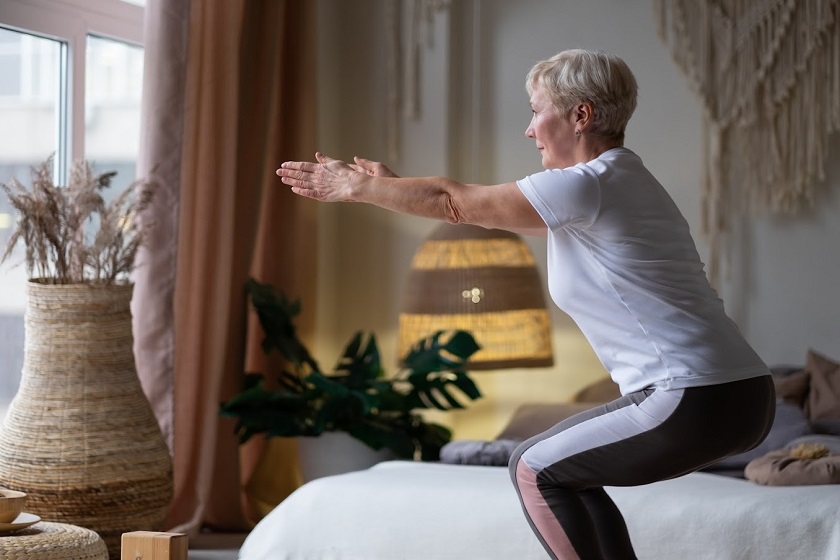
Chair posture involves bending the knees and hips and lowering yourself as if you were about to sit on a chair. You can gain strength and test your stability by using the muscles in your thighs to keep yourself in that posture without the support of a chair below.
Begin by facing a wall, feet hip-width apart and about a foot away.
To stabilize your legs, place a tiny ball or rolled-up towel between your knees, then raise your arms into the air or down at your sides. Slide your back down the wall and sit into the posture as if in a chair. Softly, lift the pelvic floor, bring your belly button toward your spine, and press the ball between your knees.
As you are now aware, practicing a chair pose can aid you in restoring your knees to optimal health. Since this position strengthens the muscles that protect your knees, it has the potential to lower your risk of future knee damage.
Exercise 4: Bridge Pose
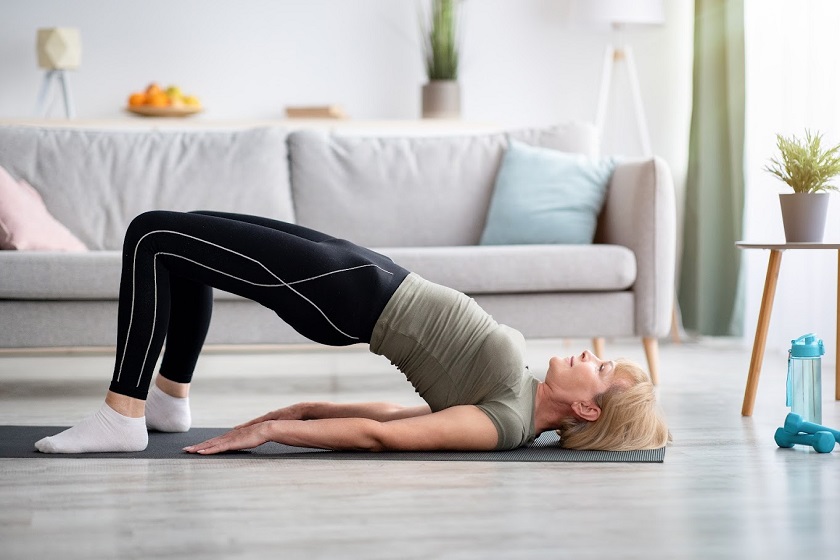
Bridge strengthens and challenges the stability of the hip, core, and leg muscles. If you cannot move to the floor for this posture, you can perform it from the comfort of your hard bed or sofa.
Begin by lying on your back, hands at your sides (palms down), and your head on the floor.
Bend your knees and stand with your feet hip-width apart. Engage your pelvic floor muscles and gently draw your belly button toward your spine. Lift the pelvis, making a long line from the head to the top of the knees, while keeping your knees pointing toward the ceiling.
Hold the stance for about five seconds before lowering the pelvis to the floor. Make a total of 10 repetitions of this motion.
Exercise 5: Tree Pose
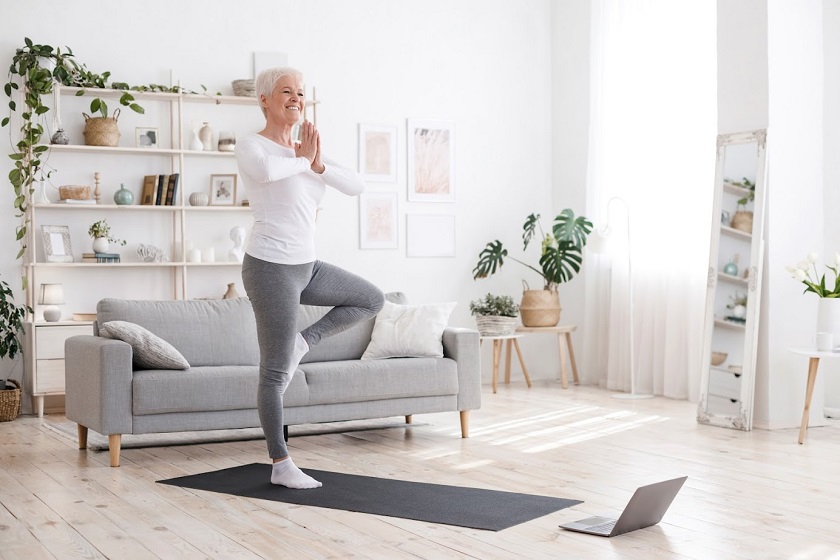
Tree pose needs you to stand on one leg and use your stabilizing muscles to enhance your balance and posture.
Begin in Mountain Pose. If necessary, place one hand on a nearby chair for support. Then, gradually lift one foot off the floor and try to bring it to your opposite inner shin. Place your bottom foot on the floor and softly push your opposite foot towards your shin.
This standing stance helps you enhance your balance, postural awareness, and body awareness. Aside from its physical advantages, this position can help to calm and relax the mind, reducing anxious thoughts and feelings.
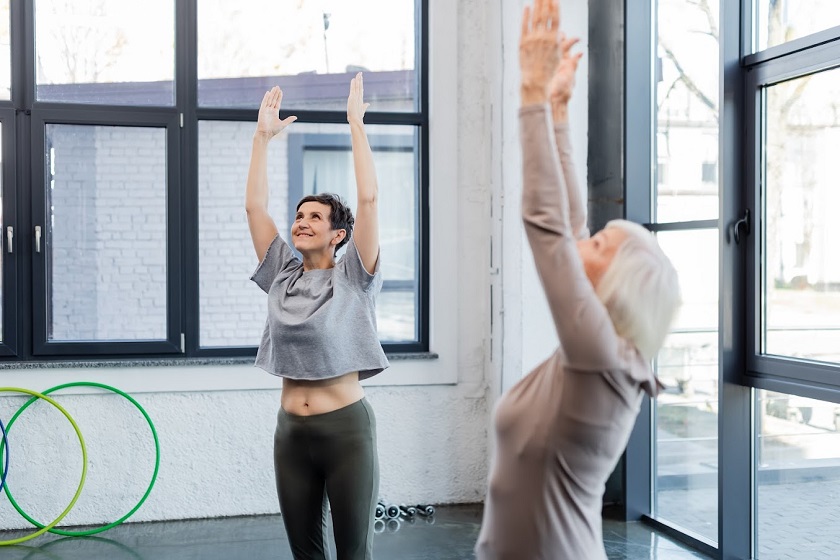 Keep holding this position for about 30 seconds before rising to your feet. Try moving the foot higher, up near your thigh, for a more intense challenge.
Keep holding this position for about 30 seconds before rising to your feet. Try moving the foot higher, up near your thigh, for a more intense challenge.
If you feel shaky, drop your leg so the ball of your foot is contacting the floor and the heel is pushing against the inner shin, and continue to hold the chair if necessary.
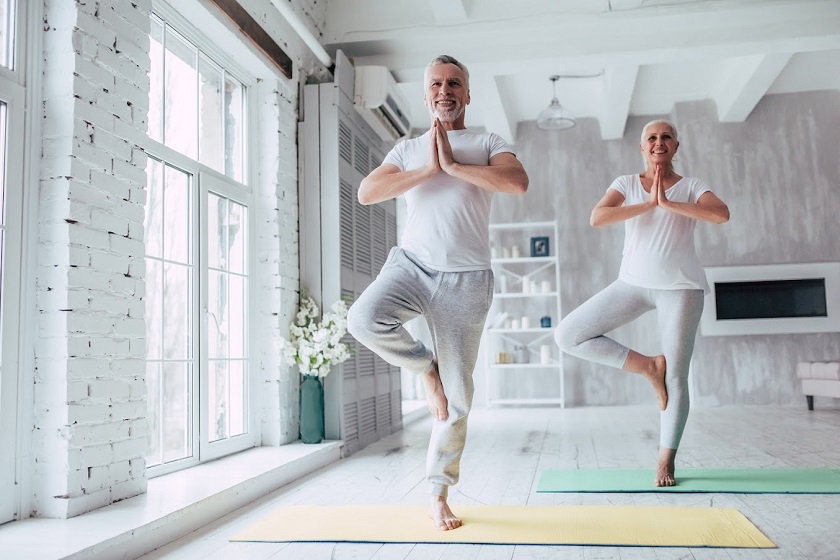
Final Words
The wonderful thing about an at-home yoga routine is that it is simple to modify it to your abilities.
You have to avoid any motions that cause discomfort or are too strenuous.
And, if you get tired quickly, do only the more manageable parts of the routine rather than the entire. The benefits of yoga for seniors are countless but don’t forget to see your doctor or physical therapist about falls prevention. It is generally better to have company at home when exercising for safety and supervision and if you need assistance.
Read more:
If you chose this article to read, it means you have or already facing balance problems just like I do. I found these exercises very helpful, but there is a vital point you should know before starting. On the first day, the moment you want to start, you still have a balance problem, and still, there is a risk of falling while doing any of these exercises. So ask one of your family members or an instructor to watch you out while exercising for a couple of first days to lower the risk of injuries and falls.
Nice yoga poses! Recently I’ve noticed balance issues and came across this article that seems helpful. But how long should I stay in each pose? and how many times should I repeat each one as a beginner?
These are yoga poses suggested for all ages, specifically seniors, and tend to be beneficial. But, from my experience, some of them, esp those needing some push and bending one knee joints, aren’t feasible for me, so you need to consider your physical condition; otherwise, they might do more harm than good.